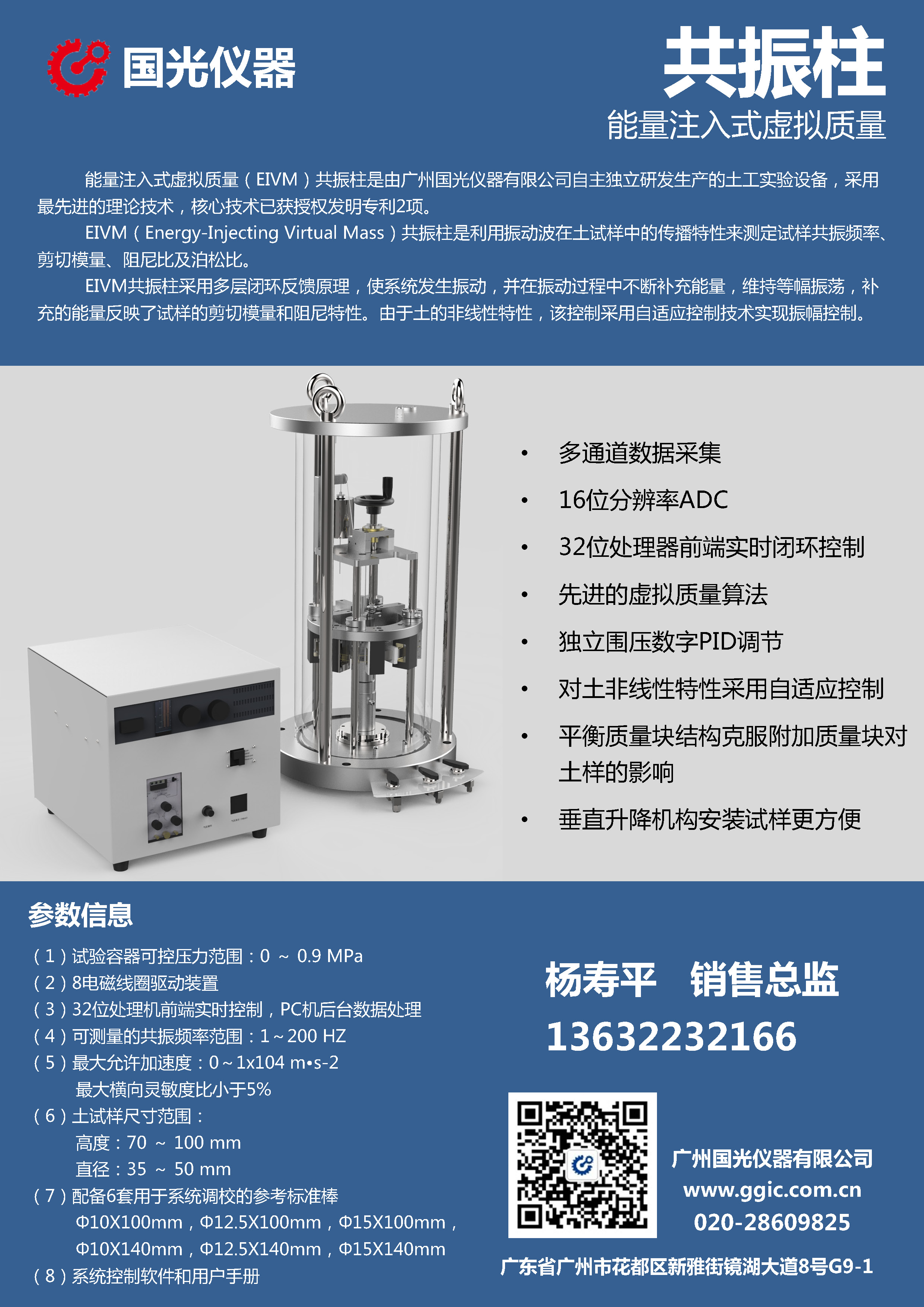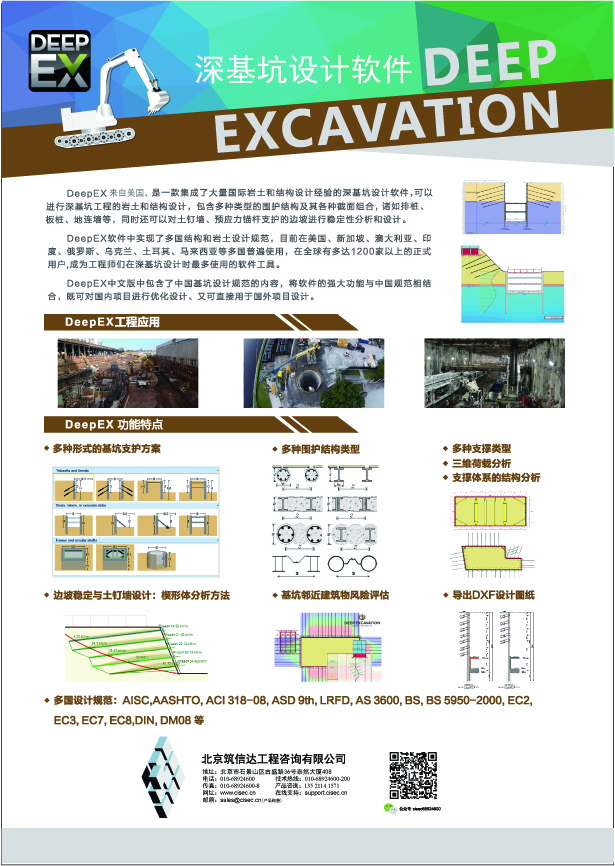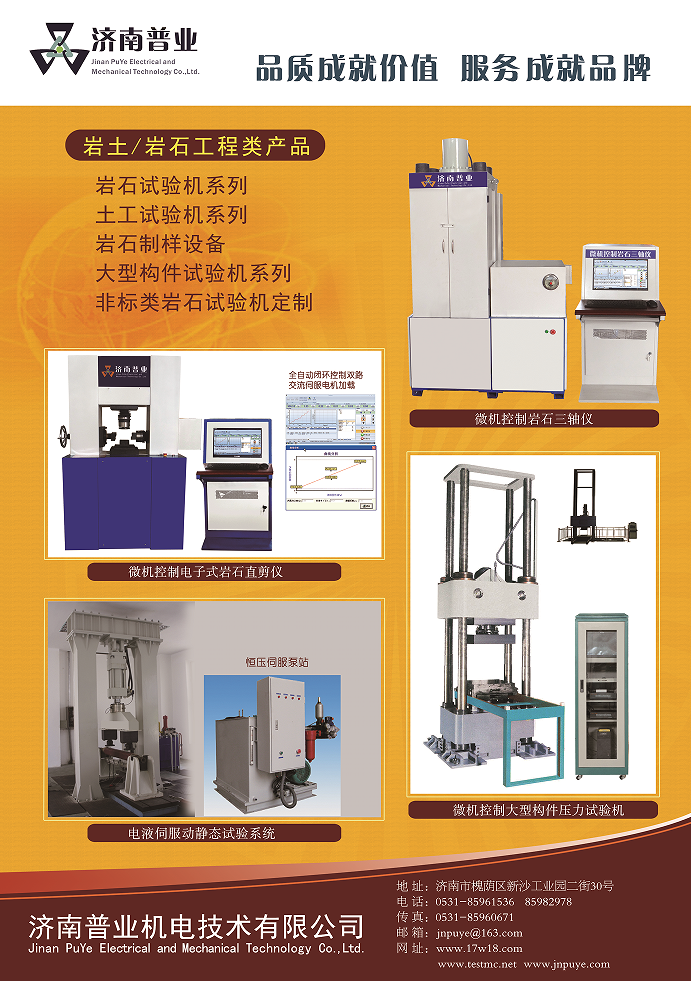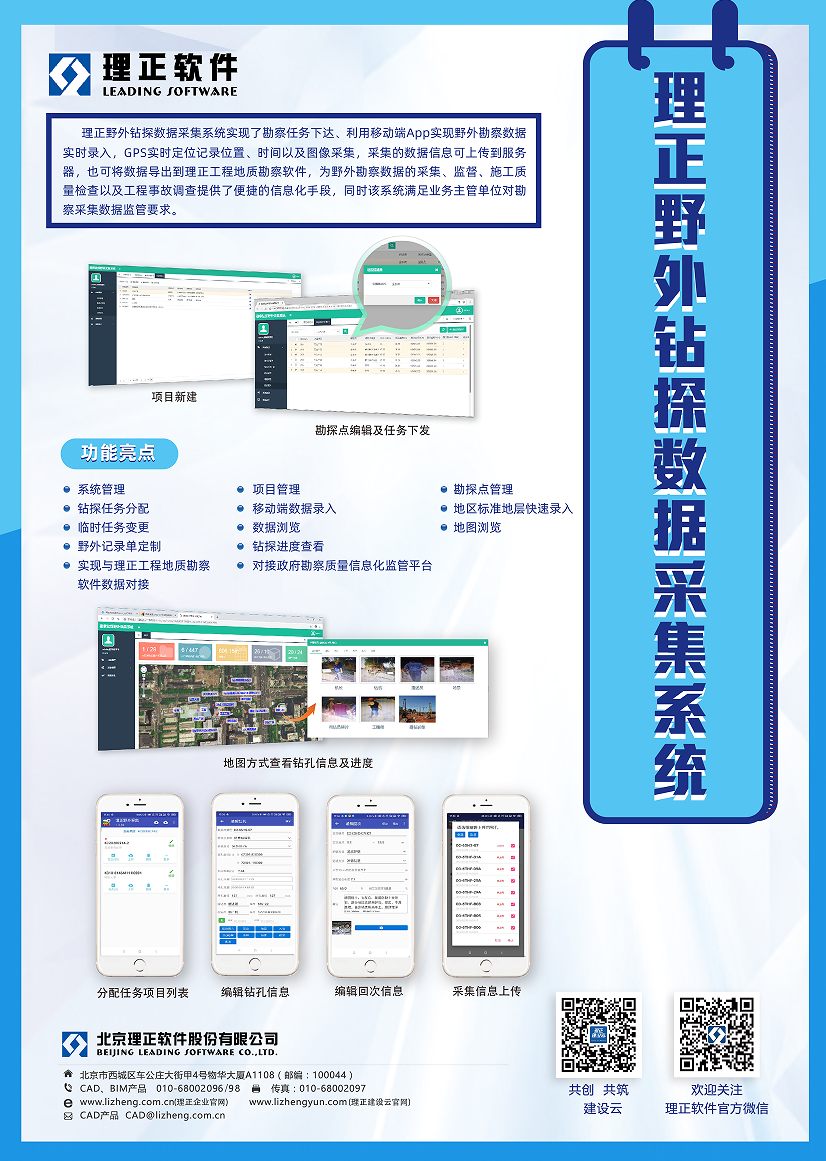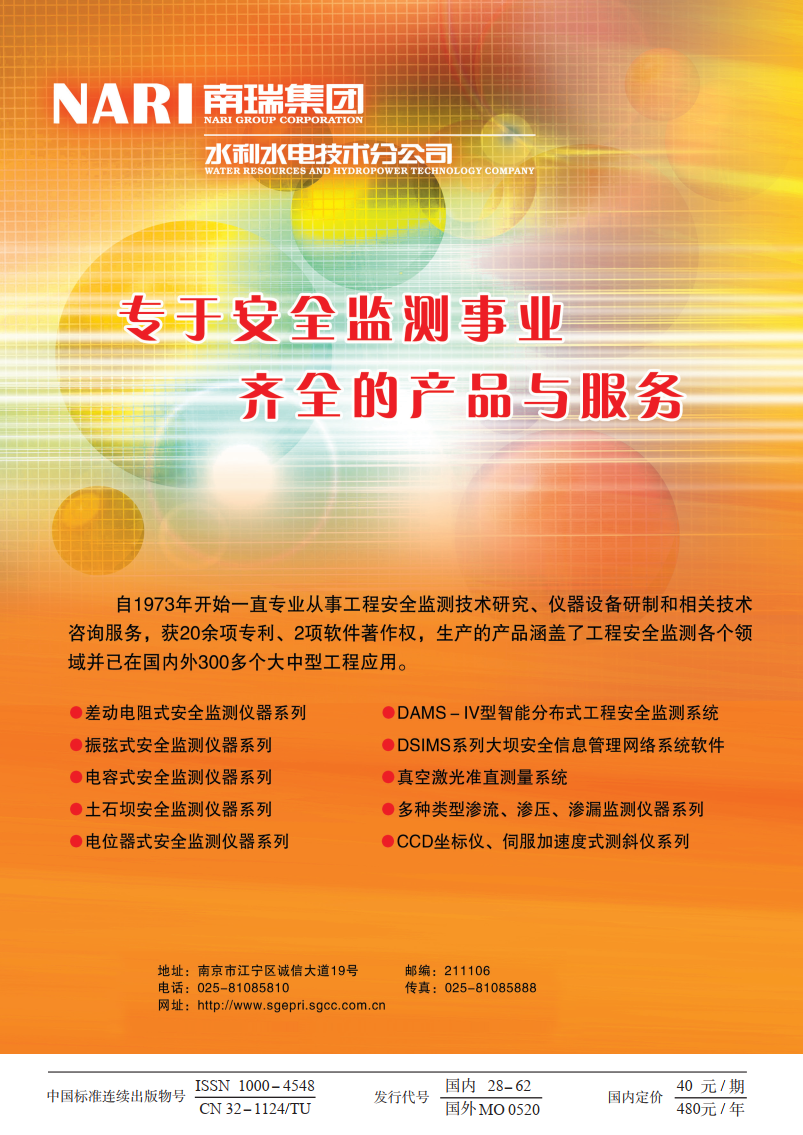Strength and leaching performances of stabilized/solidified (S/S) and ground improved (GI) contaminated site soils
-
摘要: 研究了固化/稳定化和软土加固两种土壤搅拌技术修复英国Yorkshire郡的重金属及有机物复合污染土的强度和浸出特性。使用的固化剂为氧化镁和高炉矿渣。选取现场固化/稳定化和软土加固处理后取回实验室分别养护1.5 a和1 a的试样,开展了无侧限抗压强度和浸出试验,研究了场地深度对两种技术处理复合污染土的强度和浸出特性的影响。研究结果表明,氧化镁-高炉矿渣可以显著提升污染土强度,固化土无侧限抗压强度均值均超过英国的设计值350 kPa;浸出结果表明修复后除部分样中Ni不达标,Cu和Pb的浸出浓度均达到英国饮用水标准。氧化镁和高炉矿渣联合使用可以有效固化Ni。相较于软土加固技术,固化/稳定化技术修复污染土pH值更高、Ni浸出浓度和有机物浸出浓度更低,在固化重金属和有机物复合污染土方面效果更加显著。场地深度对修复后污染土的性质影响微弱。Abstract: The soil mixing technologies (SMT) such as stabilization/solidification (S/S) and ground improvement (GI) are used to treat heavy metal and organic-contaminated site soils in the Castleford, Yorkshire site, UK. The ground granulated blastfurnace slag (GGBS) and magnesia (MgO) are used in this study. The unconfined compressive strength (UCS) tests as well as the BS EN12457 batch leaching tests are conducted on the S/S contaminated soils at 1.5 years and GI soils at 1 year to assess the influences of different depths on the strength and leaching performances of these samples. The results show that the MgO-GGBS can significantly improve the strength of contaminated soils as the average UCS of MgO-GGBS-treated samples exceeds 350 kPa suggested by the UK design standard. Moreover, except part of Ni, the leaching concentrations of Cu and Pb are able to meet drinking water standard of the England. The combination of MgO and GGBS are found to be able to immobilize Ni efficiently. Compared with the GI technique, the S/S technique can achieve higher pH, lower leaching concentration of both Ni and organic compounds, which is more effective in immobilizing heavy metals and organic compounds. The depth of the site has few influences on the properties of contaminated soils after remediation.
-
0. 引言
土的结构性是决定各类土力学特性的一个最为根本的内在因素[1]。因此,要了解土体的工程性状,必须对土体的微细观结构进行研究。目前,研究土体结构性常采用的手段有压汞(MIP)试验、扫描电镜(SEM)试验、核磁共振(NMR)试验和计算机断层扫描(CT)试验。其中,MIP和NMR试验可以直接或间接获得土体的微观孔隙分布特征,但NMR试验只能获得饱和土体的孔隙结构信息,SEM试验可以获得土体的微观结构形态。根据仪器精度的大小,CT试验获得的土体结构信息一般认为是细观尺度的。Griffiths等[2]、Jiang等[3]和Wang等[4]研究了不同状态下土体的微观结构特征。为了更加全面地反映土体的孔隙结构特征,学者们还常常将两种试验结合来表征土体的孔隙结构特征[5-6]。与其他土体不同,裂隙性是是影响膨胀土渗透、强度和变形特性的重要影响因素,对揭示膨胀土灾变机制具有重要意义[7-9]。已有学者开展了对膨胀土裂隙发育规律的研究[10]。裂隙性膨胀土的结构包括微观尺度的孔隙结构与细观的裂隙结构,意味着单一的测试手段难以全面反映膨胀土的结构特征,对于评价膨胀土的工程特性存在局限性。为此,刘宽等[11]采用NMR和SEM试验,并结合数码相机拍照,从多尺度方面分析了干湿环境下膨胀土力学性能劣化机制,为膨胀土微细观结构的研究提供了新思路。
膨胀土富含亲水性黏土矿物,土体从高含水率脱湿至低含水率的过程中,常常会产生很多裂隙,因此,定量表征膨胀土的微细观结构特征及其随含水率的变化规律,对认识其工程特性行为至关重要。本文以膨胀土为研究对象,对不同含水率膨胀土进行了MIP试验,探究含水率对膨胀土孔隙分布的影响;借助SEM图像,更直观地解释含水率对膨胀土微观结构的影响。同时,采用CT扫描技术,对脱湿过程中裂隙的演化规律进行了研究。
1. 试验土样与方法
1.1 试验土样
土样为取自新疆的原状样,呈灰白色,裂隙发育。土的液限和塑限分别为72.5%和32.6%,自由膨胀率为97.3%,土体所含蒙脱土含量为46%,为强膨胀土。
1.2 试验方案
(1)微观孔隙结构试验
将原状样从饱和的状态脱湿至不同含水率进行MIP试验。首先,对环刀样进行饱和,再将其从环刀中推出,用钢丝锯小心将土样切割为1 cm3的方块,然后在温度为20℃的恒温室内脱湿,通过称重法得到不同含水率试样,冷冻干燥后开展MIP试验。本研究中所有试样含水率控制均为26.5%(饱和状态),20%,15%和10%。
(2)微观结构形态分析试验
SEM试验试样制备过程与MIP试验相似,当土体达到设计含水率并冷冻干燥后,用手小心掰出新鲜的断面进行观察。
(3)细观裂隙结构试验
采用CT扫描试验对土样的裂隙结构进行研究,仪器的最小分辨率51 um,大于一般的土体孔隙尺寸。因此,本研究中,将CT试验获得孔隙和裂隙,统称为裂隙。试验土样为Φ50×100 mm的圆柱体。将饱和试样放在温度为20℃的恒温室内进行脱湿,当试样脱湿至设定含水率后使用保鲜膜将其包裹,使水分均匀分布。最后,依次对不同含水率下的试样进行CT试验。
2. 膨胀土微细观结构演化特征
2.1 脱湿过程中膨胀土孔隙结构演化特征
原状膨胀土MIP试验结果如图 1所示。一定的压力下,退汞曲线对应的体积值比进汞曲线对应的体积值要大,说明退汞存在滞留现象。含水率越小,累积孔隙体积越小。含水率为10%的膨胀土最终累积孔隙体积比饱和样减少了53.2%。MIP试验测得的不同含水率试样的孔隙率随含水率的变化曲线如图 2所示,随着含水率的降低,孔隙率先线性快速减小后逐渐变缓,表明当土体含水率减小到一定程度时,含水率的减小所引起的孔隙体积的改变逐渐减小。
不同含水率试样的孔隙密度分布曲线如图 3所示,可以看出,新疆膨胀土具有明显的双峰孔隙特征。随着含水率的降低,团聚体间孔隙优势孔径和团聚体内孔隙的优势孔径减小。总体而言,在较高含水率下,团聚体间孔隙占主导地位,随着孔隙水的散失,团聚体间孔隙逐渐减小甚至消失,一部分较大孔隙转化为较小孔隙,孔隙组成以团聚体内孔隙为主。
2.2 脱湿过程中膨胀土微观结构形态分析
脱湿至不同含水率膨胀土的SEM图像见图 4~6。由于SEM试验和CT试验观察到的裂隙尺度不同,将SEM试验观察到的裂隙称为“微裂隙”。随着含水率的降低,“微裂隙”减少且宽度变窄,甚至逐渐闭合。当含水率为26.5%时,土体表面附着有大量的土碎片结构,这些碎片以架空的形式构成了架空孔隙(图 5(f)),这是饱和样具有疏松结构的主要原因。随着含水率的降低,土体表面少见碎片,说明土体的结构性较强。更大倍数下的SEM图像(图 6)显示,含水率较低时,片状颗粒呈卷曲状。当含水率较高时,以片状颗粒单元构成的团聚体间形成了较多的孔隙(图 5(e)),以及片状颗粒以点—面和边—面接触的形式形成了架空孔隙,随着含水率的降低,片状颗粒多以面—面接触的形式层层叠加,进而形成了较大的集聚体,土体中的孔隙以团聚体内的孔隙为主,这与压汞试验结果一致。
2.3 脱湿过程中膨胀土细观裂隙演化特征
随着脱湿的进行,膨胀土的表面形态变化如图 7所示。饱和状态下,试样表面存在一些微小的原始裂隙,这些裂隙多为闭合或微开状态。随着水分的散失,一些裂隙从已有的裂隙处开始向四周扩散。在脱湿的初期,肉眼可见的裂隙较少,分布较为分散,裂隙的扩展方向较为单一,如图 7(b)所示。随着水分的进一步散失,土体中裂隙快速发育,但裂隙的扩展方向没有明显的规律性,并产生了一些新的裂隙,裂隙之间的连通性也逐渐增加。当含水率为10%时,土样表面的裂隙宽度变宽,裂隙之间逐渐贯穿为联通的裂隙,如图 7(d)所示,土样表面的裂隙基本可以看作由两条贯通的裂隙组成。
本研究中将土样中原本存在的裂隙称为原始裂隙,由于脱湿产生的裂隙称为脱湿裂隙。脱湿过程中试样的二维切片如图 8所示,当含水率为26.5%时,试样中存在一定原始裂隙,裂隙形态主要为线状,较为集中的分布在一个区域。当含水率降低为20%时,从试样的边缘萌生出一些短而小的脱湿裂隙,内部裂隙没有发生明显变化。此时,试样中的裂隙以原始裂隙为主,随着含水率减小为15%时,边缘的脱湿裂隙向试样内部扩展,其内部的原始裂隙也逐渐发展并与其他裂隙贯通,同时,在试样的边缘依然不断产生新的脱湿裂隙,脱湿裂隙的增加速率明显增加。当含水率为10%时,裂隙分布于试样的各个区域。试样内部裂隙以原始裂隙为主干,并逐渐延长变宽,裂隙的主方向没有明显改变,而脱湿裂隙则表现为数量多、长度短、没有明显的方向性的特征。
对膨胀土裂隙重建其三维模型,如图 9所示。随着含水率的降低,裂隙的分布位置由集中在局部逐渐发展为分布于整个试样。使用Avizo软件对联通裂隙进行分析,结果如图 10所示。可以看出,当w=26.5%,联通的裂隙主要被分为上下两个主要的裂隙,上面的联通裂隙较大,下面的联通裂隙较小。当w=20%时,1、2部位的裂隙增密增长,3部位的裂隙也明显向上扩展。当w=15%时,1、2和3部位的裂隙有了更明显的发展。当含水率减小至10%时,联通裂隙几乎分布于整个土体中。总的来说,随着含水率的降低,裂隙更容易在已有裂隙的基础上向外发展。
得到的联通裂隙率、裂隙率变化,如图 11所示。与w>15%相比,当w<15%时,裂隙率随含水率的减小增加幅度明显更大。同时,联通裂隙率随着含水率的减小明显增加,这些数据与2.2节中观察到的二维图片和三维模型中裂隙的发展规律一致。进一步分析可知,裂隙率与联通裂隙率之间存在良好的正相关关系,如图 11(b)所示,表明膨胀土中的裂隙越多,裂隙之间的联通性增强,对土体结构的整体性损伤越来越大。
3. 膨胀土微细观结构演化机制与概化模型
从宏观角度来看,膨胀土由裂隙和土颗粒的团聚体组成,土颗粒的团聚体之间形成团聚体间孔隙和团聚体内孔隙,如图 12所示。事实上,裂隙也是团聚体间孔隙,但为了更清楚地表达裂隙与孔隙之间的区别,这里以裂隙、团聚体内孔隙和团聚体间孔隙来描述土中的孔隙。
团聚体的收缩累积到一定程度,表现为团聚体组内的团聚体颗粒之间的距离被拉的“更近”,从而团聚体间孔隙变小,团聚体组的收缩,宏观上表现为土体体积的收缩。事实上,自然界中土体的收缩是不均匀的,当团聚体组之间的张拉应力大于团聚体组之间的抗拉强度时,原本存在的裂隙会被“拉长”和“拉宽”,使得裂隙扩展发育为更大的裂隙,或者在“薄弱”的地方产生新的裂隙。相反,当张拉应力小于团聚体组之间的抗拉强度时,这些团聚体组则会凝聚成更为密实的结构,因此,膨胀土的结构表现为微观上团聚体间孔隙的减少和细观上裂隙增多的现象。值得注意的是,在SEM试验中,随着含水率的降低,观察到的“微裂隙”数量减少且宽度变窄,而在CT试验中,裂隙是逐渐增多的趋势,这是因为SEM观察到的裂隙是微观尺度的“微裂隙”(约30 um),这部分裂隙附近土体之间还存在较强的粘聚力,在脱湿的过程中,有可能在吸力的作用下被“拉近”,产生闭合的现象。而CT试验观察到的裂隙为细观尺度的裂隙,裂隙附近的土体之间粘聚力较弱,在脱湿的过程中,往往容易成为薄弱部位,从而发展为更大的裂隙。
事实上,孔隙体积的减小和裂隙体积的增加是同步产生的。当含水率从26.5%脱湿至15%时,微观上孔隙率的减小速率为单位含水率减小1.14%,而细观上裂隙率的减小速率为单位含水率减小0.125%;当含水率小于15%时,孔隙率的减小速率为单位含水率减小0.158%,裂隙率的增加速率为单位含水率减小0.35%。可以看出,孔隙体积的减小主要发生在脱湿的前期,裂隙的发育在脱湿后期更为明显。
4. 结论
(1)随着含水率的减小,膨胀土的孔隙率先快速减小后逐渐变缓。孔隙分布以团聚体间孔隙为主逐渐转变为以团聚体内孔隙占优势。
(2)膨胀土的颗粒单元以片状颗粒为主,当含水率较高时,土体中含有纵横交错的“微裂隙”和大量的架空孔隙,土体结构松散;随着含水率的降低,“微裂隙”数量减小且宽度变窄,土体结构渐趋紧密,SEM结果与MIP试验结果具有较好的一致性。
(3)随着水分的蒸发,原始裂隙在发育扩展过程中主方向基本不变,脱湿裂隙自试样外侧向内发展,数量多且杂乱无章。土体裂隙率随着含水率的降低而增加,当含水率小于15%时,裂隙率增加明显。联通裂隙率的增速随含水率的减小逐渐增加且与裂隙率之间具有正相关关系。
-
表 1 土壤污染物及其含量[2]
Table 1 Concentrations of soil contaminants
污染物 浓度范围/(mg·kg-1) Pb 95~175 Zn 150~220 As 130~140 Cu 1075~1600 Ni 1170~2200 Cr 700~1150 总有机物 7185~9230 表 2 固化剂化学成分(%)[31]
Table 2 Compositions of binder materials
主要成分 氧化镁 高炉矿渣 SiO2 0.9 36.5 CaO 1.9 39.5 Al2O3 0.1 12.5 Fe2O3 0.8 0.5 MgO 93.5 8.5 K2O — 0.4 Na2O — 0.2 TiO2 — 0.5 LOI 2.78 — 表 3 固化剂组合成分
Table 3 Compositions of binders
样品编号 土/% 水/% 固化剂 MgO/% GGBS/% MgO∶GGBS SS16 70.0 15.0 1.50 13.50 1∶9 SS9 85.0 7.5 0.75 6.75 1∶9 SS11 85.0 7.5 7.50 0 — GI1 90.0 0 10.00 0 — GI2 95.0 0 5.00 0 — GI3 97.5 0 2.50 0 — GI9 97.5 0 2.25 0.25 9∶1 -
[1] AL-TABBAA A, BARKER P, EVANS C W. Soil mix technology for land remediation: recent innovations[C]//Proceedings of the Institution of Civil Engineers Ground Improvement, 2011, Great Britain: 127-137.
[2] AL-TABBAA A, LISKA M, OUELLET-PLAMONDON C, et al. Soil mix technology for integrated remediation and ground improvement: from laboratory work to field trials[C]//Proceedings of the Fourth International Conference on Grouting and Deep Mixing, 2012, New Orleans: 522-532.
[3] GU K, JIN F, AL-TABBAA A, et al. Incorporation of reactive magnesia and quicklime in sustainable binders for soil stabilisation[J]. Engineering Geology, 2015, 195: 53-62. doi: 10.1016/j.enggeo.2015.05.025
[4] WU H L, JIN F, BO Y L, et al. Leaching and microstructural properties of lead contaminated kaolin stabilized by GGBS-MgO in semi-dynamic leaching tests[J]. Construction and Building Materials, 2018, 172: 626-634. doi: 10.1016/j.conbuildmat.2018.03.164
[5] YI Y, LISKA M, AL-TABBAA A. Initial investigation into the use of GGBS-MgO in soil stabilisation[C]//Proceedings of the Fourth International Conference on Grouting and Deep Mixing, 2012, New Orleans: 444-453.
[6] 薄煜琳. 粒化高炉矿渣和氧化镁固化稳定化铅污染黏土的强度、溶出及微观特性的研究[D]. 南京: 东南大学, 2015. Bo Yu-Lin. The Strength, Leaching and Microscopic Mechanism of Ground Granulated Blast Furnace Slag and Magnesium Oxide Stabilized Lead-contaminated Soils[D]. Nanjing: Southeast University, 2015, (in Chinese)
[7] NIDZAM R M, KINUTHIA J M. Sustainable soil stabilisation with blastfurnace slag - a review[J]. Construction Materials: Proceedings of the Institution of Civil Engineers, 2010, 163(3): 157-165. doi: 10.1680/coma.2010.163.3.157
[8] SHI C, DAY R L. Chemical activation of blended cements made with lime and natural pozzolans[J]. Cement and Concrete Research, 1993, 23(6): 1389-1396. doi: 10.1016/0008-8846(93)90076-L
[9] SHI C, FERNáNDEZ-JIMéNEZ A. Stabilization/solidification of hazardous and radioactive wastes with alkali-activated cements[J]. Journal of Hazardous Materials, 2006, 137(3): 1656-1663. doi: 10.1016/j.jhazmat.2006.05.008
[10] 陈恩义, 李体祯. 优质粒化高炉矿渣粉的生态环保功效[J]. 混凝土世界, 2011(5): 26-30. doi: 10.3969/j.issn.1674-7011.2011.05.006 CHEN En-yi, LI Ti-zhen. The ecological environmental effect of high quality blast furnace slag power[J]. China Concrete, 2011(5): 24-28. (in Chinese) doi: 10.3969/j.issn.1674-7011.2011.05.006
[11] DU Y J, BO Y L, JIN F, et al. Durability of reactive magnesia-activated slag-stabilized low plasticity clay subjected to drying-wetting cycle[J]. European Journal of Environmental and Civil Engineering, 2016, 20: 215-230. doi: 10.1080/19648189.2015.1030088
[12] LISKA M. Properties and Applications of Reactive Magnesia Cements in Porous Blocks[D]. Cambridge: University of Cambridge, 2010.
[13] SHAND M A. The Chemistry and Technology of Magnesia[M]. Hoboken, New Jersey: John Wiley & Sons, Inc., 2006.
[14] JIN F, GU K, AL-TABBAA A. Strength and hydration properties of reactive MgO-activated ground granulated blastfurnace slag paste[J]. Cement and Concrete Composites, 2015, 57: 8-16. doi: 10.1016/j.cemconcomp.2014.10.007
[15] JIN F, AL-TABBAA A. Evaluation of novel reactive MgO activated slag binder for the immobilisation of lead and zinc[J]. Chemosphere, 2014, 117: 285-294. doi: 10.1016/j.chemosphere.2014.07.027
[16] YI Y, LISKA M, AL-TABBAA A. Properties and microstructure of GGBS-magnesia pastes[J]. Advances in Cement Research, 2014, 26(2): 114-122. doi: 10.1680/adcr.13.00005
[17] SHEN Z, PAN S, HOU D, et al. Temporal effect of MgO reactivity on the stabilization of lead contaminated soil[J]. Environment International, 2019, 131.
[18] JIN F, WANG F, AL-TABBAA A. Three-year performance of in-situ solidified/stabilised soil using novel MgO-bearing binders[J]. Chemosphere, 2016, 144: 681-688. doi: 10.1016/j.chemosphere.2015.09.046
[19] ALPASLAN B, YUKSELEN M A. Remediation of lead contaminated soils by stabilization/solidification[J]. Water, Air & Soil Pollution, 2002, 133(1/2/3/4): 253-263.
[20] LI W, YI Y. Stabilization/solidification of lead-and zinc- contaminated soils using MgO and CO2[J]. Journal of CO2 Utilization, 2019, 33: 215-221. doi: 10.1016/j.jcou.2019.05.029
[21] XIA W Y, DU Y J, LI F S, et al. In-situ solidification/stabilization of heavy metals contaminated site soil using a dry jet mixing method and new hydroxyapatite based binder[J]. Journal of Hazardous Materials, 2019, 369: 353-361. doi: 10.1016/j.jhazmat.2019.02.031
[22] MA F, WU B, ZHANG Q, et al. An innovative method for the solidification/stabilization of PAHs-contaminated soil using sulfonated oil[J]. Journal of Hazardous Materials, 2018, 344: 742-748. doi: 10.1016/j.jhazmat.2017.11.015
[23] SHI C, SPENCE R. Designing of Cement-Based Formula for Solidification/Stabilization of Hazardous, Radioactive, and Mixed Wastes[J]. Critical Reviews in Environmental Science and Technology, 2010(4): 391-417.
[24] SUZUKI T, NAKAMURA A, NIINAE M, et al. Lead immobilization in artificially contaminated kaolinite using magnesium oxide-based materials: Immobilization mechanisms and long-term evaluation[J]. Chemical Engineering Journal, 2013, 232: 380-387. doi: 10.1016/j.cej.2013.07.121
[25] SUBRAMANIAN S, KHAN Q, KU T. Strength development and prediction of calcium sulfoaluminate treated sand with optimized gypsum for replacing OPC in ground improvement[J]. Construction and Building Materials, 2019, 202: 308-318. doi: 10.1016/j.conbuildmat.2018.12.121
[26] PHETCHUAY C, HORPIBULSUK S, ARULRAJAH A, et al. Strength development in soft marine clay stabilized by fly ash and calcium carbide residue based geopolymer[J]. Applied Clay Science, 2016(127/128): 134-142.
[27] KERAMATIKERMAN M, CHEGENIZADEH A, NIKRAZ H. Effect of GGBFS and lime binders on the engineering properties of clay[J]. Applied Clay Science, 2016(132/133): 722-730.
[28] SHARMA A K, SIVAPULLAIAH P V. Ground granulated blast furnace slag amended fly ash as an expansive soil stabilizer[J]. Soils and Foundations, 2016, 56(2): 205-212. doi: 10.1016/j.sandf.2016.02.004
[29] AL TABBAA A L M, JEGANDAN S, et al. Overview of project SMiRT for integrated remediation and ground improvement[C]//International Symposium on Soil Mixing and Admixture Stabilisation, 2009, Okinawa.
[30] XUE Q, WANG P, LI J S, et al. Investigation of the leaching behavior of lead in stabilized/solidified waste using a two-year semi-dynamic leaching test[J]. Chemosphere, 2017, 166: 1-7. doi: 10.1016/j.chemosphere.2016.09.059
[31] OUELLET-PLAMONDON C. Characterisation and Performance of Innovative Aluminosilicates for Soil Mix Technology Permeable Reactive Barriers[D]. Cambridge: University of Cambridge, 2012.
[32] WHEELER P. Leachate repellent[J]. Ground Engineering, 1995, 28(5): 20-22.
[33] 王菲, 沈征涛, 金飞. 原位固化/稳定污染土不同深度下强度和浸出特性[J]. 东南大学学报(自然科学版), 2016, 46(增刊1): 105-110. https://www.cnki.com.cn/Article/CJFDTOTAL-DNDX2016S1019.htm WANG Fei, SHEN Zheng-tao, JIN Fei. Strength and leaching performances of in-situ stabilized/solidified (S/S) contaminated site soils under different depth[J]. Journal of Southeast University (Natural Science Edition), 2016, 46(S1): 105-110. (in Chinese) https://www.cnki.com.cn/Article/CJFDTOTAL-DNDX2016S1019.htm
[34] PAVIA S, CONDREN E. Study of the durability of OPC versus GGBS concrete on exposure to silage effluent[J]. Journal of Materials in Civil Engineering, 2008, 20(4): 313-320. doi: 10.1061/(ASCE)0899-1561(2008)20:4(313)
[35] LIMBACHIYA V, GANJIAN E, CLAISSE P. Strength, durability and leaching properties of concrete paving blocks incorporating GGBS and SF[J]. Construction and Building Materials, 2016, 113: 273-279. doi: 10.1016/j.conbuildmat.2016.02.152
[36] WANG F, WANG H, JIN F, et al. The performance of blended conventional and novel binders in the in-situ stabilisation/solidification of a contaminated site soil[J]. Journal of Hazardous Materials, 2015, 285: 46-52. doi: 10.1016/j.jhazmat.2014.11.002
[37] KOGBARA R B, AL-TABBAA A, YI Y, et al. pH-dependent leaching behaviour and other performance properties of cement-treated mixed contaminated soil[J]. Journal of Environmental Sciences, 2012, 24(9): 1630-1638. doi: 10.1016/S1001-0742(11)60991-1
[38] WANG F, WANG H, AL-TABBAA A. Leachability and heavy metal speciation of 17-years old stabilised/solidified contaminated site soils[J]. Journal of Hazardous Materials, 2014, 278: 144-151. doi: 10.1016/j.jhazmat.2014.05.102
[39] WIELAND E, DäHN R, VESPA M, et al. Micro- spectroscopic investigation of Al and S speciation in hardened cement paste[J]. Cement and Concrete Research, 2010, 40(6): 885-891. doi: 10.1016/j.cemconres.2010.02.001
[40] LEONARD S A, STEGEMANN J A. Stabilization/solidification of petroleum drill cuttings: Leaching studies[J]. Journal of Hazardous Materials, 2010, 174(1): 484-491.
[41] XEIDAKIS G S. Stabilization of swelling clays by Mg(OH)2. Changes in clay properties after addition of Mg-hydroxide[J]. Engineering Geology, 1996, 44(1/2/3/4): 107-120.
[42] WANG F, WANG H, AL-TABBAA A. Time-dependent performance of soil mix technology stabilized/solidified contaminated site soils[J]. Journal of Hazardous Materials, 2015, 286: 503-508. doi: 10.1016/j.jhazmat.2015.01.007
[43] GILLMAN G P. Hydrotalcite: leaching-retarded fertilizers for sandy soils[J]. Management of Tropical Sandy Soils for Sustainable Agriculture, 2005: 107-111.
-
期刊类型引用(12)
1. 何长江. 基于最小势能原理的深基坑吊脚墙变形研究. 江西建材. 2024(02): 71-73 .  百度学术
百度学术
2. 金国龙,张永来,李鸿桥. 地下连续墙新型刚性接头设计与研究. 建筑施工. 2024(05): 629-631 .  百度学术
百度学术
3. 罗会东,周佳奇,冯志军,叶涛,薛高升,周腾龙,曹安乐. 地下连续墙刚性排插接头技术研究. 施工技术(中英文). 2024(16): 33-38 .  百度学术
百度学术
4. 夏欢,曾旭涛,付金磊,朱俊涛,屈成. 超深异型排插式刚性接头地连墙工艺试验研究. 地下空间与工程学报. 2024(06): 2020-2033 .  百度学术
百度学术
5. 陈亮,颜书法,万昱. 跨孔电法探测地下连续墙渗漏隐患的应用研究. 岩土工程学报. 2023(08): 1605-1614 .  本站查看
本站查看
6. 姚云龙,刘鑫,古剑,王智健,倪嘉辉. 地下连续墙钢箱接头力学性能研究. 三峡大学学报(自然科学版). 2022(04): 57-63 .  百度学术
百度学术
7. 陈平,黄海涛,安刚建,周雄好,罗支贵,蔡虹,袁正璞. 软弱地层深大基坑富水特性及组合支护控制. 科学技术与工程. 2022(15): 6278-6290 .  百度学术
百度学术
8. 汪洵. 地下连续墙在含水地层基坑开挖中的应用研究. 地下水. 2022(06): 40-42 .  百度学术
百度学术
9. 田德胜. 分节预制地下连续墙围护结构加固施工技术. 粉煤灰综合利用. 2022(05): 22-28 .  百度学术
百度学术
10. 罗震刚,周晨,王晶,陈伟,马栋魁,沈才华. 地连墙兼作水池壁板的接头质量控制参数及厚度优化研究. 河南科学. 2020(05): 749-754 .  百度学术
百度学术
11. 刘颖,相斌辉,扶名福. 沿海地区复杂地质条件下三角形深大基坑变形实测分析与数值模拟研究. 水资源与水工程学报. 2020(05): 207-212+217 .  百度学术
百度学术
12. 杜昌隆,赵强,薛洪松. 洞内狭小空间中地下连续墙施工关键技术. 市政技术. 2020(06): 187-190+194 .  百度学术
百度学术
其他类型引用(16)




 下载:
下载:

















